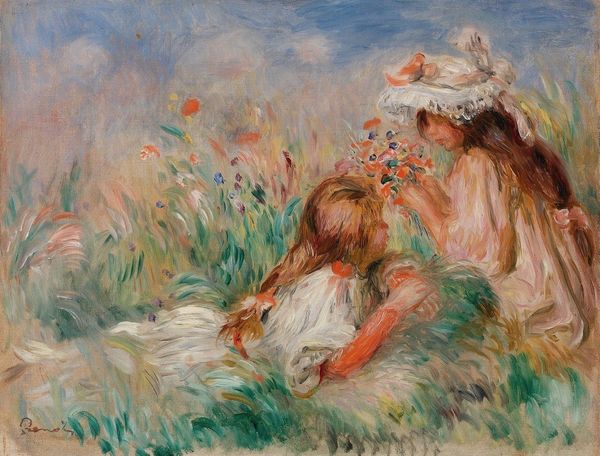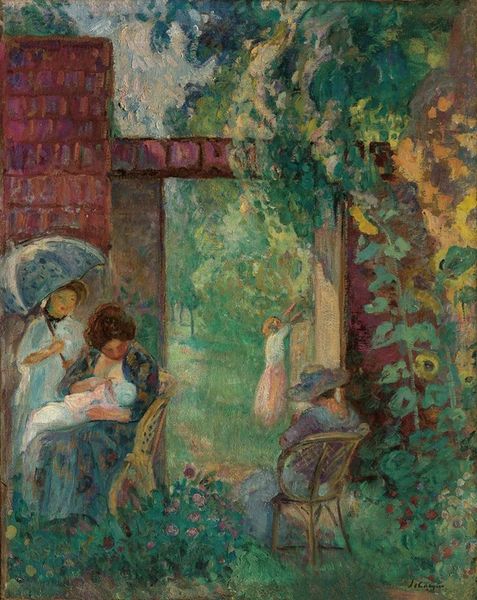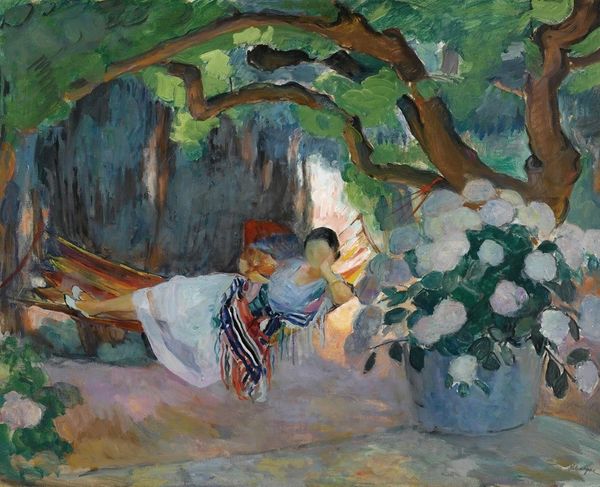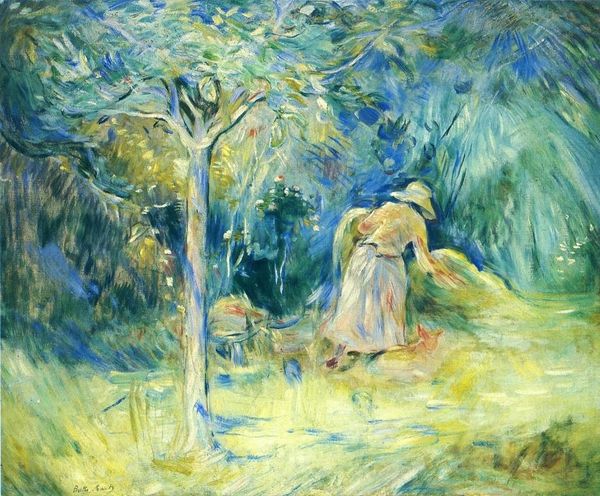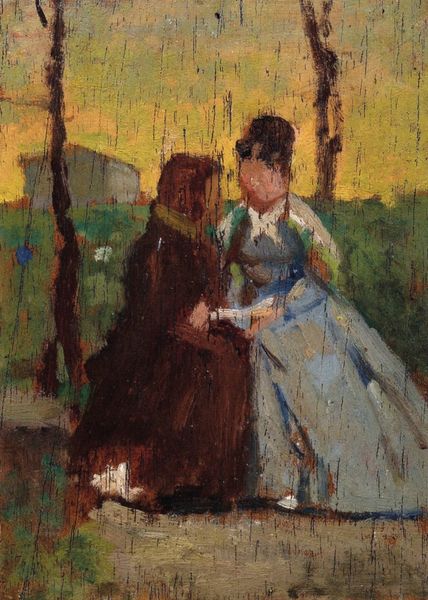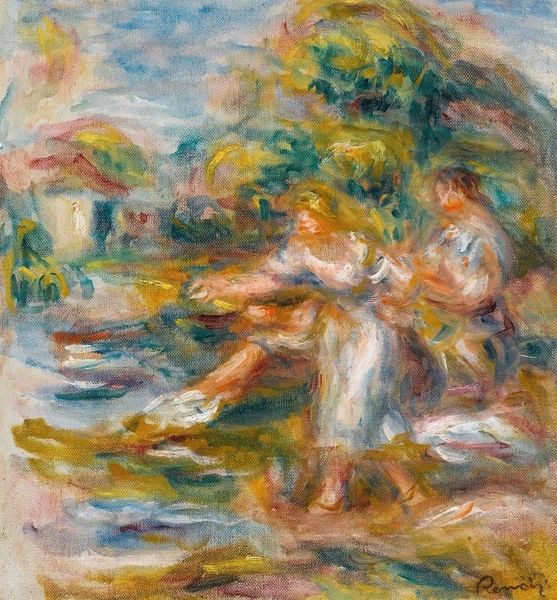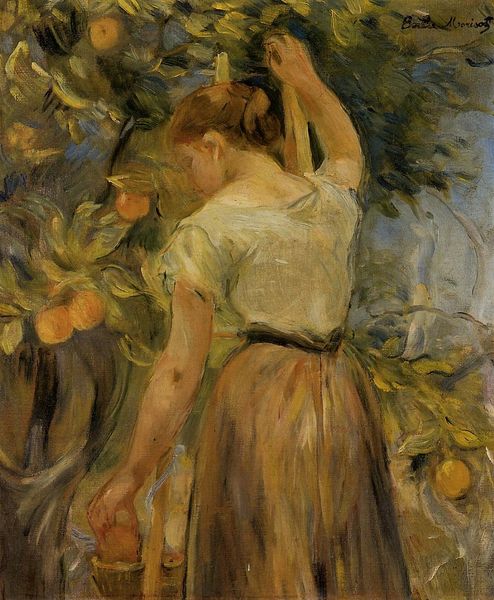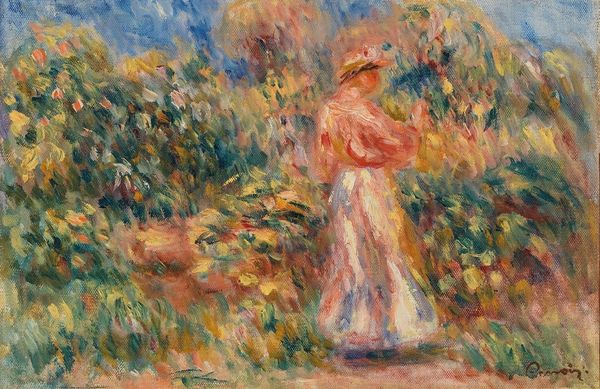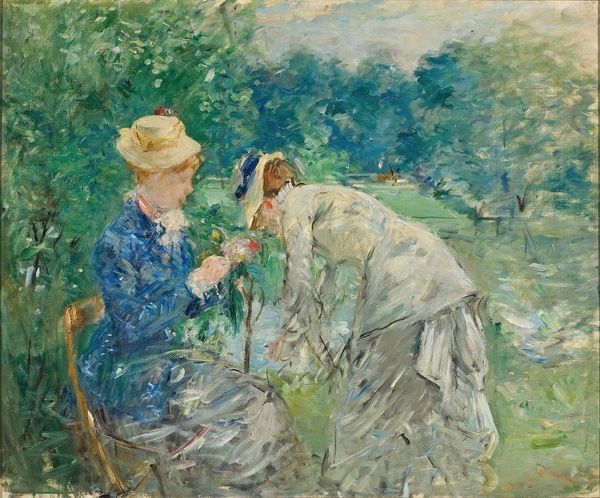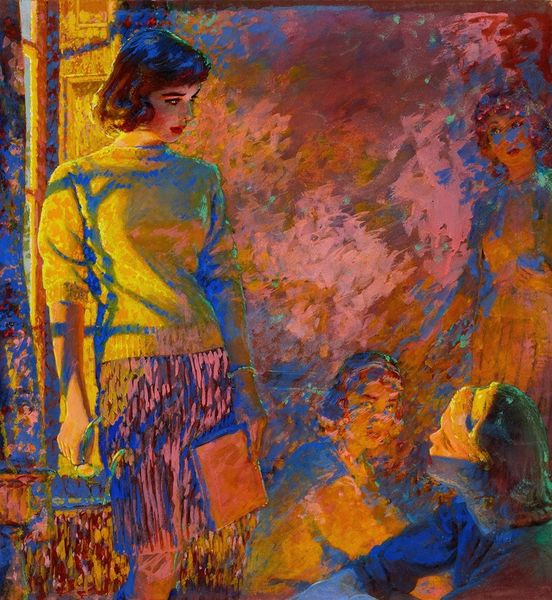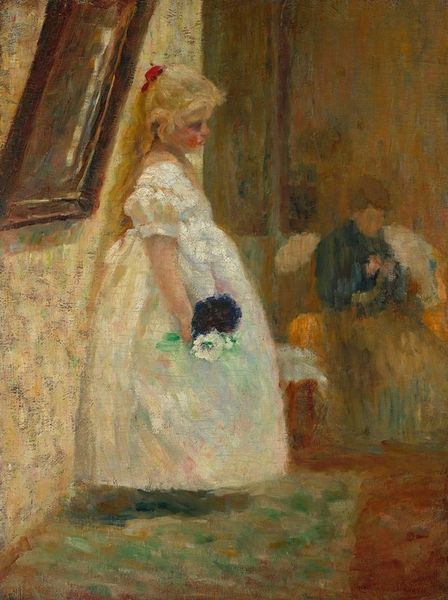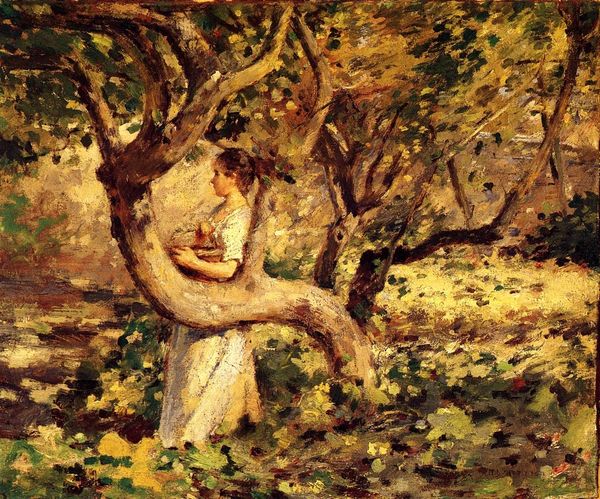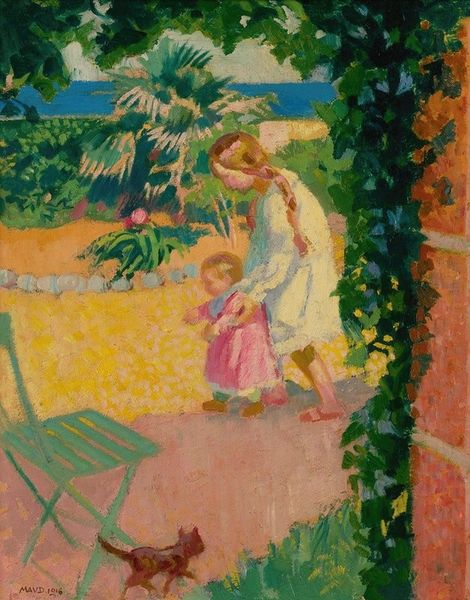
painting, oil-paint, impasto
#
portrait
#
painting
#
impressionism
#
oil-paint
#
figuration
#
oil painting
#
impasto
#
group-portraits
#
genre-painting
Copyright: Georgina de Albuquerque,Fair Use
Curator: Let's turn our attention to "Mulher Com Criança No Parque," an oil painting attributed to Georgina de Albuquerque. The brushstrokes are so visible—it practically vibrates. What do you make of it? Editor: It feels intimate, almost like a snapshot. The loose brushwork, that hazy atmosphere—it speaks to a fleeting moment of tenderness, perhaps a commentary on early 20th-century bourgeois motherhood in Brazil, and a push toward domesticity and natural settings. Curator: Precisely. The thick impasto suggests a quick, decisive application, indicative of plein air painting, wouldn’t you agree? We see that materiality play out in other works of hers and of her contemporaries, but I agree on the suggestion of intimacy given its modest scale. It begs the question of Albuquerque’s means as a painter too; given that the process seems central here. Editor: I do, but also notice how Albuquerque deconstructs idealized images of women, particularly within a social context where their roles were increasingly under pressure during the Belle Époque. The woman isn’t just a decorative object; she’s a nurturer, existing outside the traditional salon setting. Her role is changing, the park suggests her active integration with nature and, subtly, politics of public sphere. Curator: Good point, that relationship of nature and public. It really strikes me how the vibrant blues and greens compete for our attention, creating depth using simple contrast techniques in oil paints. Looking closer you can really discern Albuquerque’s physical investment, in material and application: do you think the rapid handling of the material contributes or distracts from the scene’s more subdued sentiment? Editor: The materiality strengthens the narrative—Albuquerque captures the texture and rhythm of daily life and allows the mother to inhabit the painting—making it less static. This way, the thick brushstrokes, which one can imagine the labor to achieve, push against a polished, unemotional presentation, while simultaneously reflecting the historical context in Brazil with ever-changing ideals of motherhood at play. Curator: True, that sense of shifting identity feels present. Albuquerque is engaging with that change through materiality. Thanks for untangling that. Editor: Likewise, I appreciated thinking about these social forces via Albuquerque’s application of her materials.
Comments
No comments
Be the first to comment and join the conversation on the ultimate creative platform.

